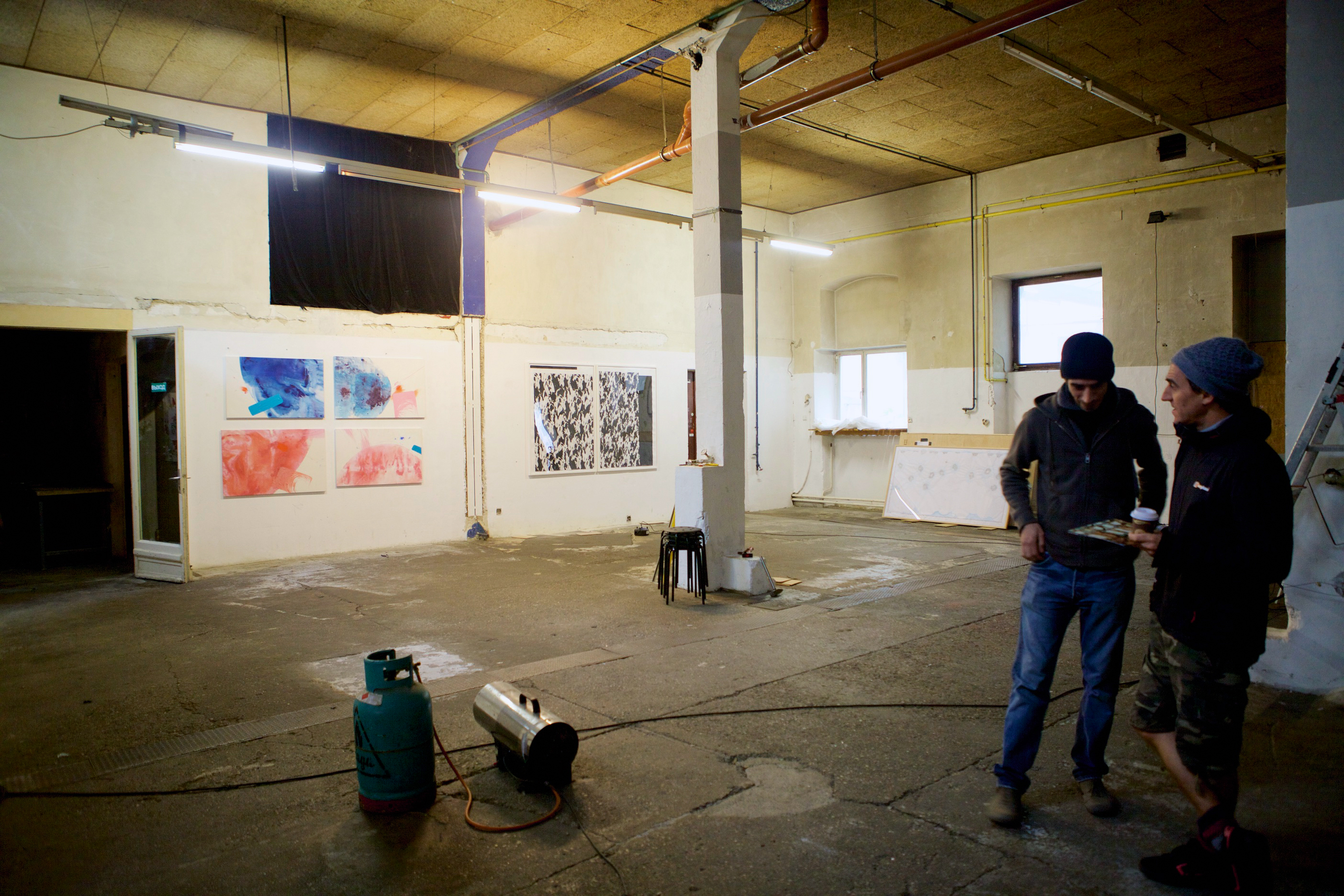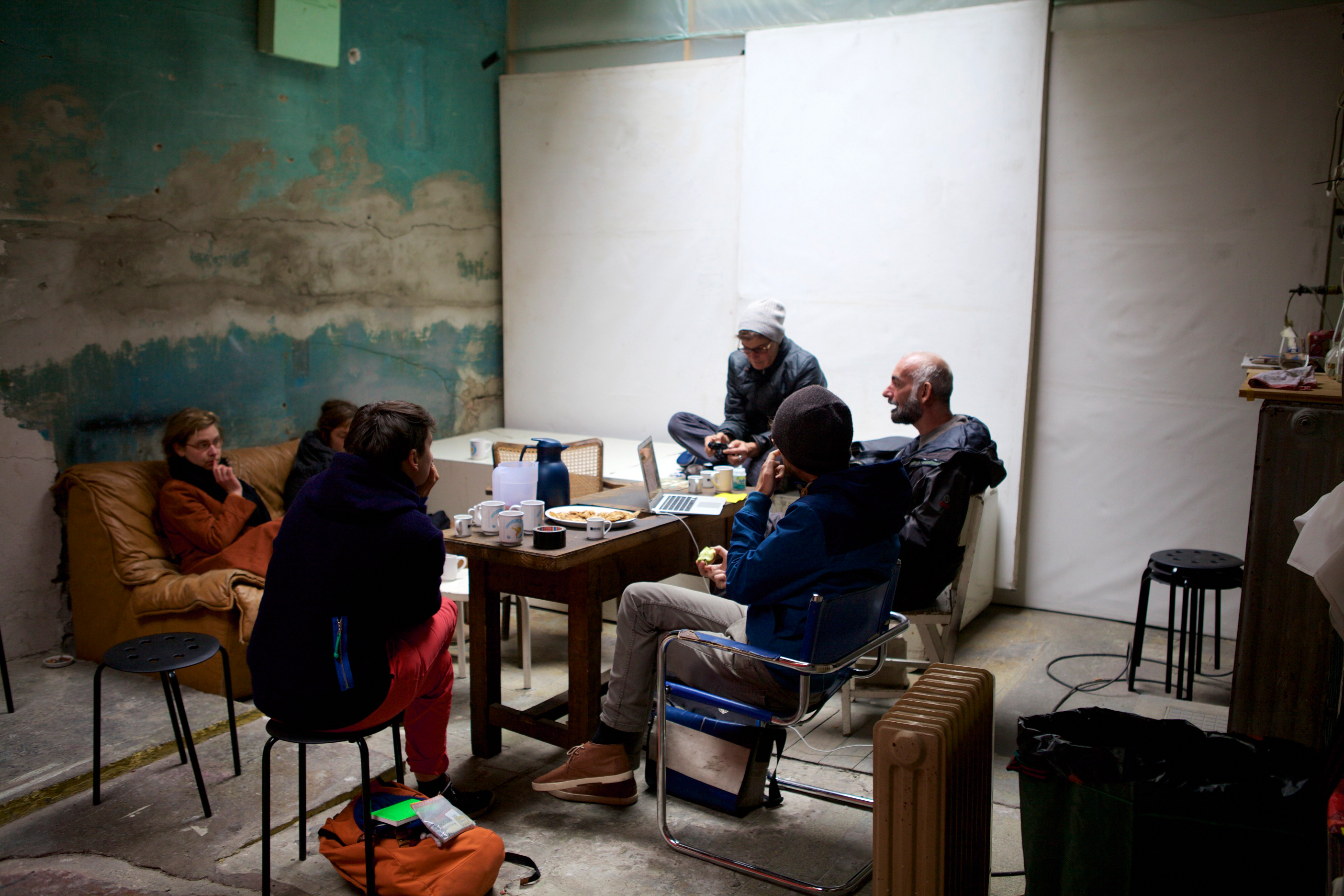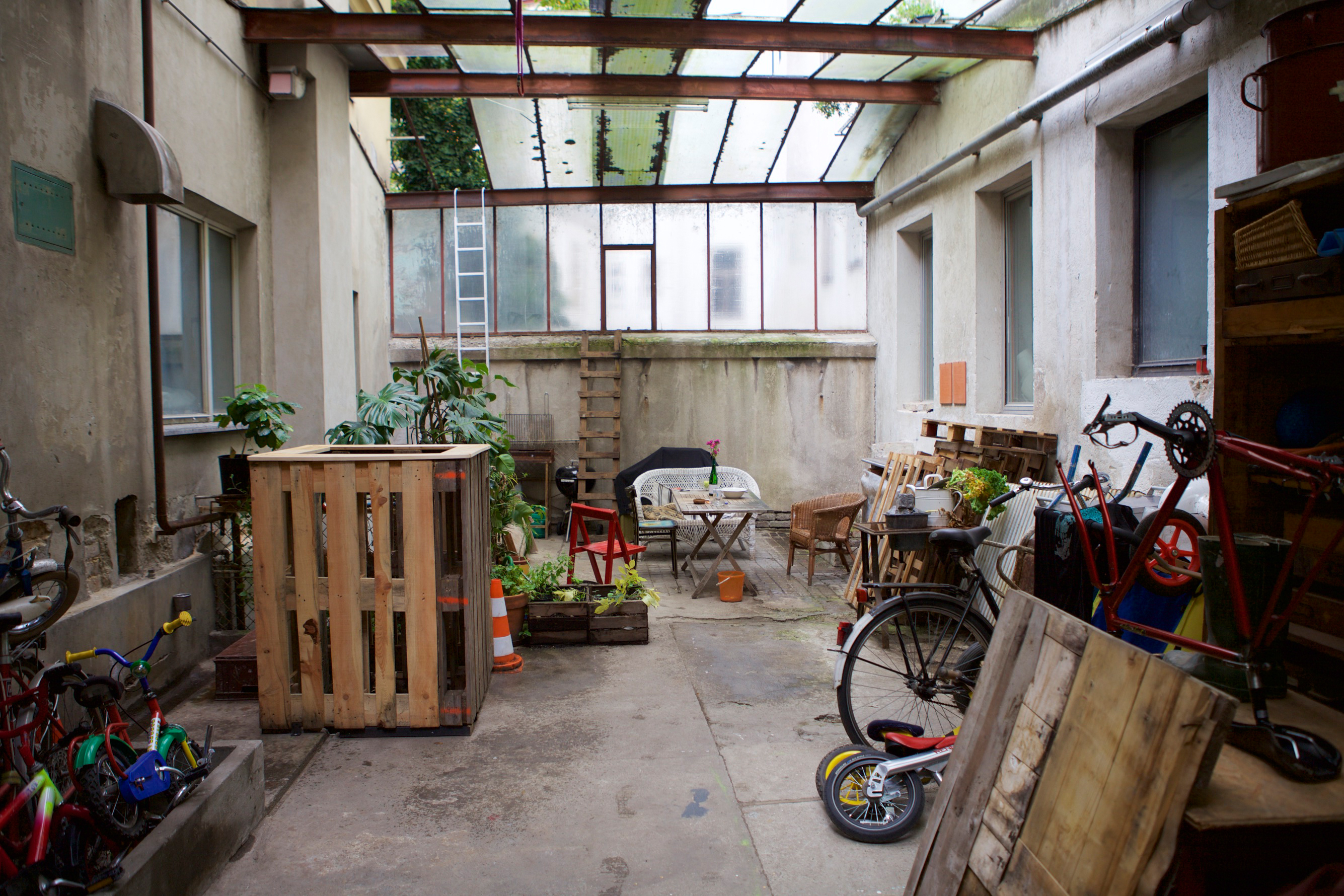The city is a cooperative environment. It presumes synergies between different aims, coordination between multiple activities, harmonizing procedures and ruled behavior in order to function and provide welfare to its inhabitants. It is also a contradictory organism, confronting diverging interests, competing actors, conflicting powers and objectives. Urban life is the result of an unstable balance between collaborative practice and competition for supremacy and survival.
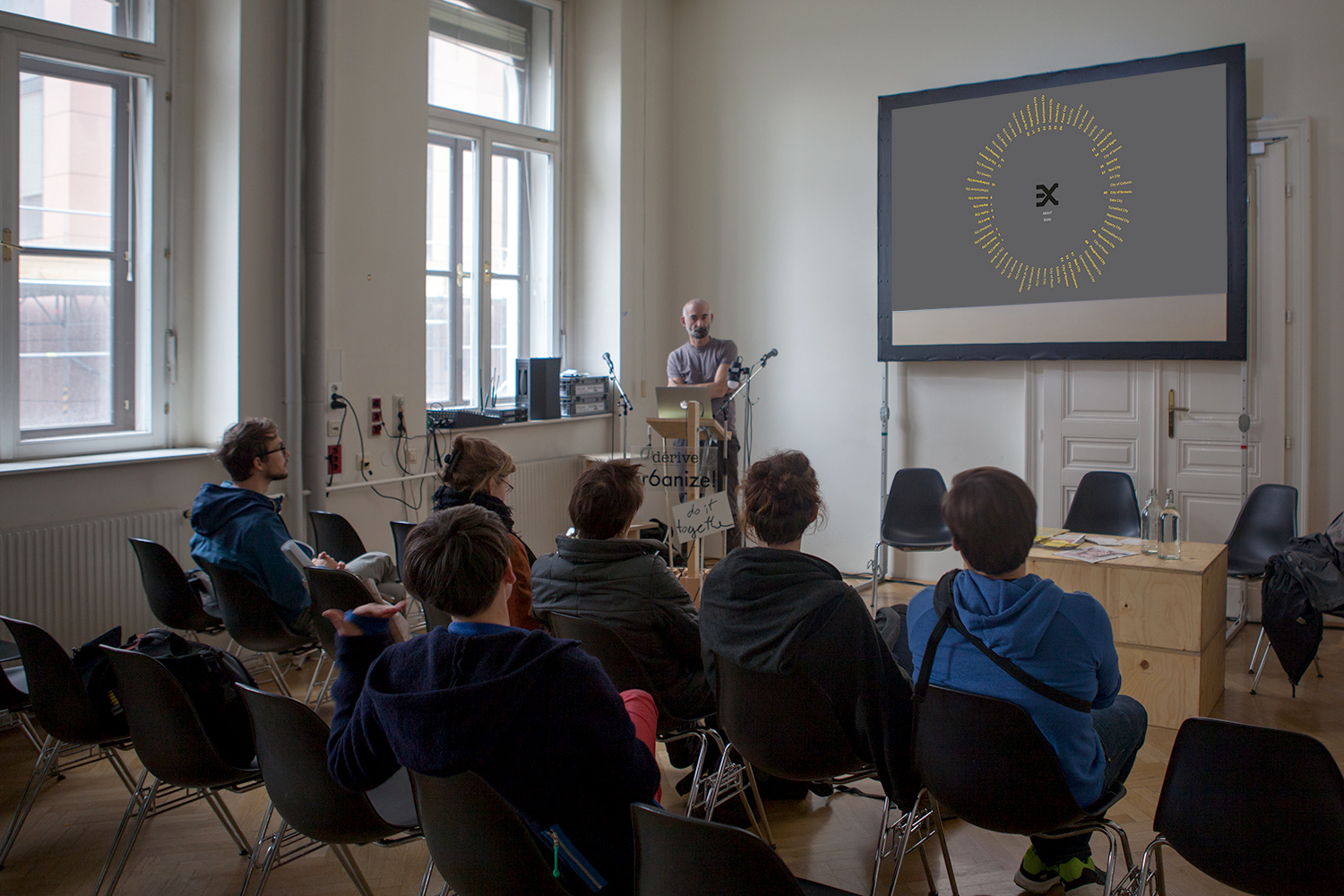
The above lines are the initial draft for a possible definition of a new exercise resulting from the experience of a short workshop at Urbanize! Festival in Vienna. The topic of the 2015 edition was Cooperative Playground and we proposed to the participants to build on the idea of city as collaborative environment to take inspiration for an urban walk.
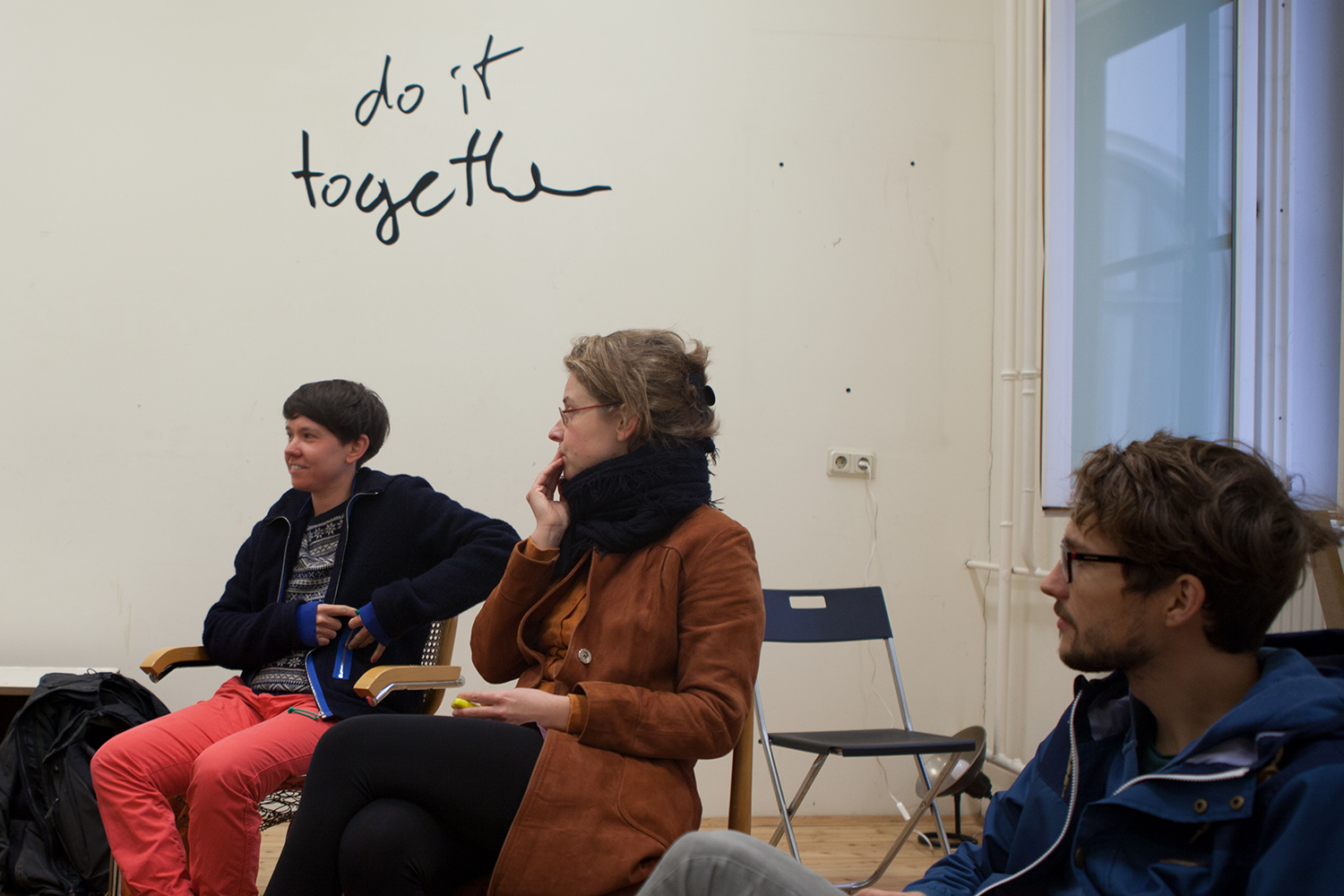
1st day
During the first session we discussed the multiple implications of the concept of collaboration / collaborative city referring to the existing definitions in our methodological device. Among many, we examined Market City – city as a site of exchange and economic entity – Productive City – a field of transformation and a source and of labor, knowledge and materials, Spontaneous City – the city as a self-regulating organism-, Governing City, - the city as an administrative structure -, Web City – the city as a network of networks-, etc. We also took in consideration “negative definitions” as Contested City or Neglected City that somehow stress on specular aspects as conflict, competition, or lack of collaboration. We examined also definitions apparently less related to the subject, deriving from the participants curiosities and interests, as Perceived City/Sonicity - the city as a symphony or a cacophonic composition -. It became soon clear that the collaborative feature is a fundamental character of urban life, which is connected with almost every disciplinary approach or epistemology of the urban and could be retraced in almost all the definitions in our device. The main point of discussion (as in the case of the previous and thematically close workshop in Belgrade on the City of Commons) is rather to question collaboration for what purpose, among which subjects, and when and why not to collaborate…
At the end the end of the session we asked the participants to take their time to check the 64 different definitions and chose according to their personal interests or leanings one exercise to be employed the following day in the field trip.
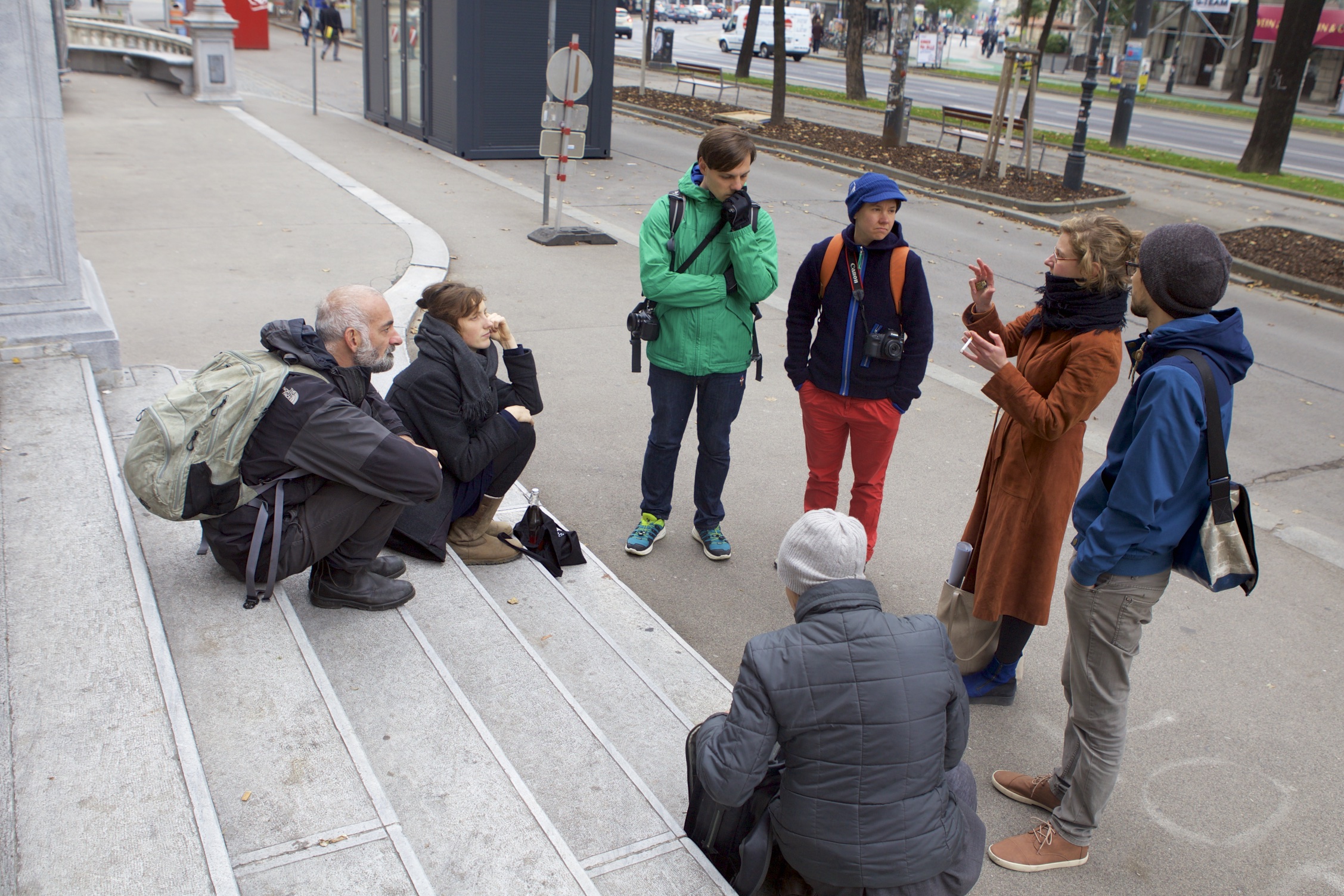
2nd day
We decided to start our walk from the festival base and to end up in the 17th district at the Mo-e, a cultural space / co-working of which collective management one of the participants was part. Before leaving, we quickly revised the definitions / exercises chosen by the participants:
- Lukas chose Public City, questioning how public space may be the result of collaborative action rather than a normative status.
- Margit with Nature City tackles the challenging relation between natural organism and artificial human environment
- Carolina looks at how the formation of different social classes or cultural groups engenders detached or autonomous geographies.
- Alex was interested in Threshold City
- Alisa was undecided between Art City and Transforming City; we agreed that both exercises had some interesting correlation, questioning actors and processes that produce transformation or determining art creation in the urban landscape.
- Finally, Manuela and I decided to have a look at Ruled City, questioning how norms and regulations are the result of a collaborative management of urban space rather than authoritative.
